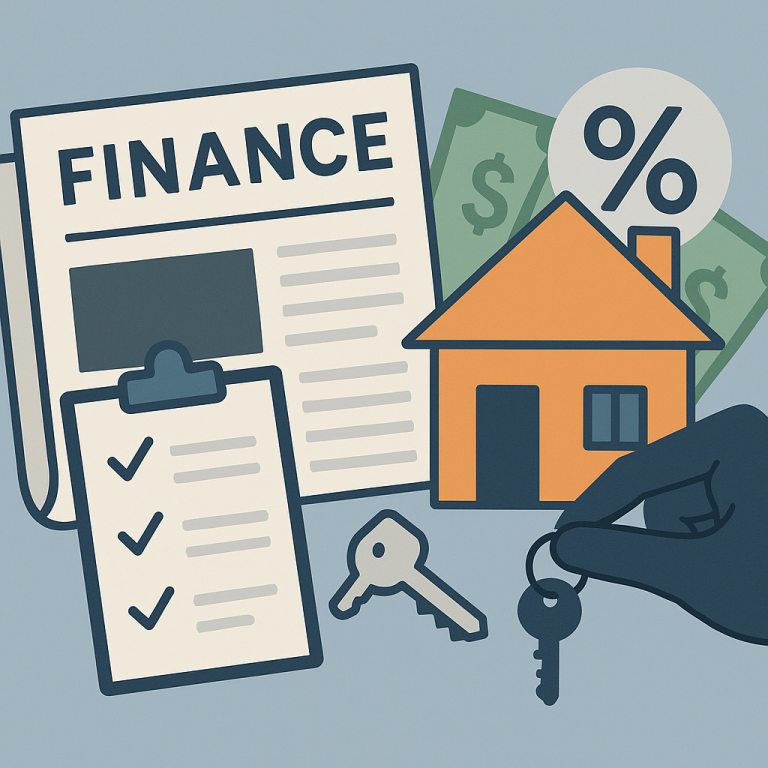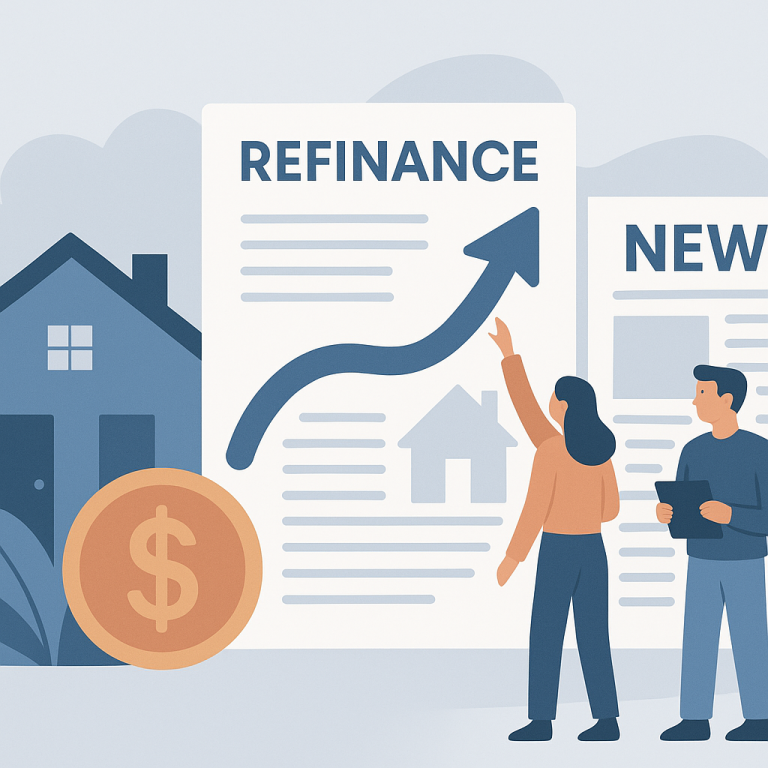Refinance guide DSCR refinance for rental properties explained
DSCR Refinance for Rental Properties Explained
What a DSCR Refinance Is and When It Makes Sense
DSCR stands for Debt Service Coverage Ratio. In a DSCR refinance, the lender evaluates the property’s ability to cover mortgage payments using the rental income it generates, rather than relying primarily on the owner’s personal income or tax returns. Lenders calculate DSCR as Net Operating Income (NOI) divided by annual debt service (annual mortgage payments). If your property’s rental income comfortably covers debt service (typical lender minimums range from 1.0 to 1.25), you may qualify.
DSCR refinance makes sense when you own one or more investment properties and want to: lower your rate or monthly payment, convert adjustable-rate debt to fixed, pull out equity (cash‑out), or consolidate loans — especially if your personal income documentation is limited or you want underwriting focused on property performance.
Benefits and Drawbacks
Benefits:
- Underwriting focuses on property cash flow, not personal income or tax returns — useful for investors with complex tax situations or low reported income.
- Quick qualification for seasoned investors when rental history is strong.
- Flexible loan options: term lengths, fixed or adjustable rates, and cash‑out availability.
- Works for single-family rentals (SFRs), small multifamily, and portfolios, depending on lender.
Drawbacks:
- Interest rates and fees can be higher than conventional owner‑occupied refinances because investment properties are higher risk.
- Lenders may require larger cash reserves and lower loan‑to‑value (LTV) ratios.
- DSCR underwriting is sensitive to vacancy and operating expenses; properties with inconsistent occupancy or high expenses may not qualify.
- Some lenders cap cash‑out amounts or impose stricter eligibility rules for certain property types.
Costs and Fees to Expect
A DSCR refinance carries many of the usual refinance costs:
- Origination fee / lender fees — often 0.5% to 1.5% of loan amount.
- Appraisal fee — $300 to $800+ depending on property type and market.
- Title search, title insurance, and closing agent fees — variable by state.
- Underwriting and processing fees.
- Prepayment penalty — rare but possible if your current loan has one.
- Escrow/reserve requirements — lenders commonly require 3–12 months of mortgage payments in reserves for investment loans.
- Mortgage insurance — generally only if LTV is high and the lender requires it for investment loans (less common than on owner‑occupied loans but possible).
Typical total closing costs run 2%–5% of the loan amount. Always request a Loan Estimate to compare lenders.
Step-by-Step DSCR Refinance Process
Prepare property financials: gather current lease agreements, rent roll, bank statements showing rent deposits, property expense records, and evidence of occupancy history.
Shop lenders and get prequalified: speak with lenders experienced in DSCR underwriting (banks, credit unions, and specialty lenders) to compare DSCR thresholds, rates, LTV limits, and reserve requirements.
Submit application: provide property documents, recent mortgage statements, and any required ID or entity paperwork (LLC operating agreement if property is owned by a business).
Appraisal and income verification: the lender orders an appraisal and verifies rental income. Some lenders use actual rents, others use market rent estimates or rent schedules; some apply a rent coverage factor (e.g., 75–100% of rent).
Underwriting: lender calculates NOI, debt service, and DSCR. They will also assess property condition, tenant stability, and reserves. Be prepared to respond to conditions or additional document requests.
Clear-to-close and closing: after clearing conditions, sign closing documents, pay closing costs, and complete funding. If you’re refinancing multiple properties, timelines may be longer.
Common Pitfalls to Avoid
- Overestimating rental income — lenders often adjust rents downward for DSCR or use conservative market rents; don’t assume 100% of listed rent will count.
- Ignoring vacancy and operating expenses — accurate expense tracking matters; high maintenance or HOA fees can weaken DSCR even with strong rents.
- Not shopping lenders — DSCR products and calculations vary widely; compare offers and ask how each lender calculates DSCR.
- Failing to account for reserve requirements — reserve balances can increase cash needed at closing and ongoing liquidity needs.
- Using recent tax returns as only proof — if your taxes show low rental income due to depreciation, rely on rent documentation and lender policies rather than assuming tax returns will carry the day.
Short FAQ
How do lenders calculate DSCR?
DSCR = Net Operating Income (gross rental income minus operating expenses, excluding mortgage debt) divided by annual debt service (annual principal + interest payments). A DSCR of 1.25 means the property generates 25% more income than needed to cover debt service.
What DSCR is required to qualify?
Typical minimums range from 1.0 to 1.25, but requirements vary by lender and loan program. Some lenders accept DSCR of 1.0 for established investors, while others require higher cushions for riskier properties.
Can I refinance multiple rental properties at once?
Yes. Portfolio or blanket refinances are available for multiple properties, but underwriting is more complex. Some lenders prefer single‑asset loans; others will underwrite a portfolio’s combined DSCR.
Will a DSCR refinance affect my personal credit or taxes?
Most DSCR loans still check personal credit and may require personal guarantees, especially for small investors. The refinance itself doesn’t change tax treatment of rental income, but cash‑out proceeds used for personal purposes may have different tax implications — consult a tax advisor.
A DSCR refinance is a powerful tool when your rental property produces reliable income but your personal income documentation is limited or you want underwriting to reflect property performance. Shop lenders, verify your numbers conservatively, and budget for reserves and closing costs to avoid surprises.
META: DSCR refinance rental properties, Debt Service Coverage Ratio, rental property refinance guide, DSCR costs, underwriting, FAQs







